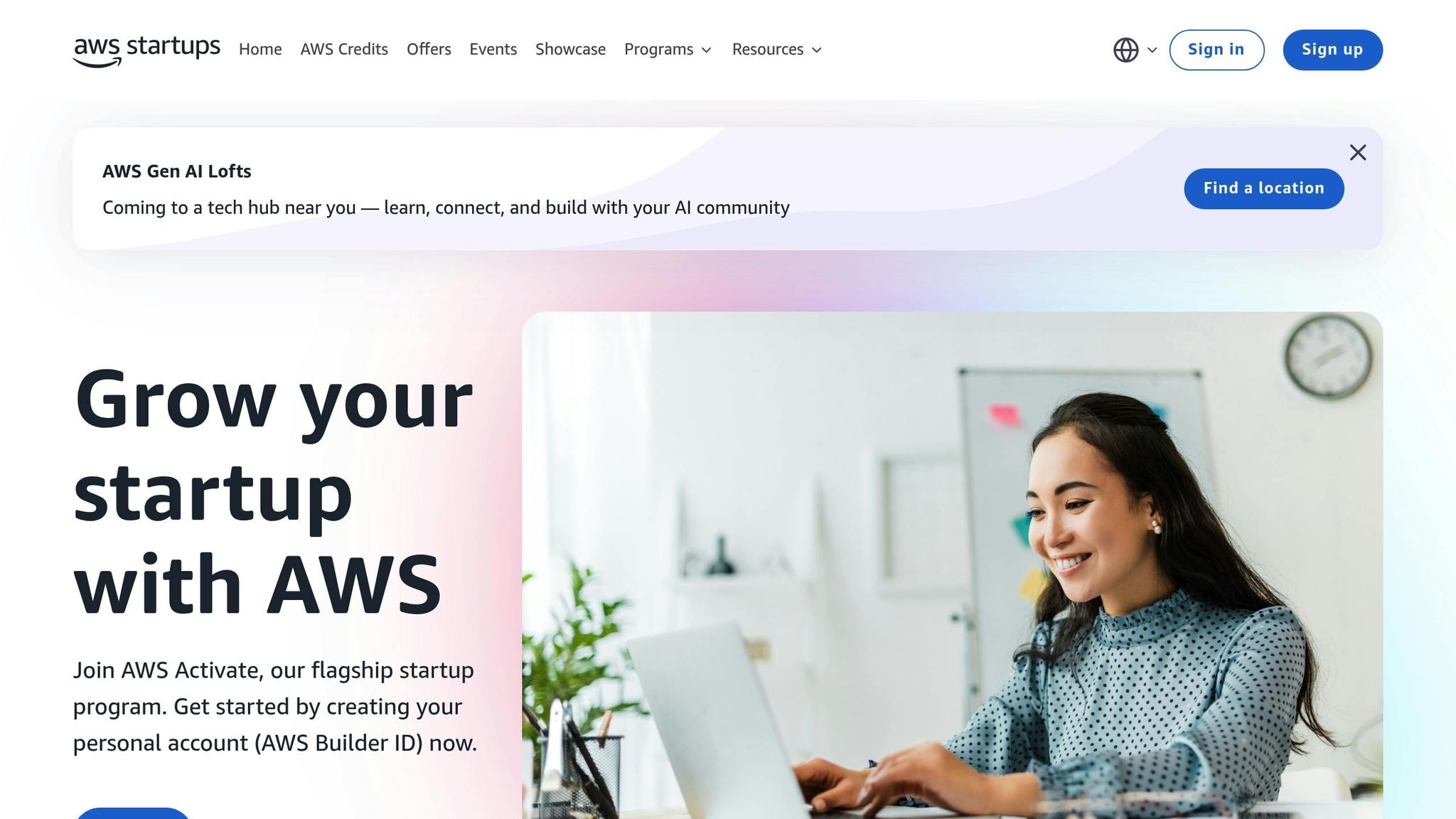Public-private partnerships (PPPs) are transforming how governments and businesses work together to improve market access through digital tools. These collaborations combine government oversight with private sector expertise, delivering faster, cost-effective solutions that benefit communities and economies.
Key takeaways:
- Faster Implementation: Technologies like AI, cloud computing, and 5G speed up public service delivery.
- Cost Savings: Shared resources reduce costs while boosting efficiency.
- Market Access Expansion: Initiatives like Kenya’s M-Pesa and India’s RailTel Wi-Fi connect underserved areas, driving economic growth.
- Digital Tools in Focus:
- Cloud Platforms: Lower costs, ensure reliability, and reduce carbon emissions.
- AI Analytics: Optimize decision-making and improve efficiency.
- E-Government Portals: Simplify citizen and business interactions.
Examples like Ukraine’s ProZorro procurement system and California’s broadband expansion highlight how these partnerships save billions, improve transparency, and bridge infrastructure gaps. The future of market access lies in scalable, adaptable digital PPPs that align public and private goals for shared success.
Enigio Webinar:Scaling digital trade:how Public-Private Partnerships are turning vision into reality

Key Benefits of Public-Private Digital Partnerships
Public-private partnerships in the digital realm offer tangible advantages that reshape the way governments and businesses function. By blending the innovation and agility of private companies with the policy goals and reach of public institutions, these collaborations unlock new possibilities. Below, we explore how these partnerships pave the way for leveraging digital tools effectively.
Accelerating Digital Transformation
When governments team up with private tech firms, projects move faster. Private companies bring cutting-edge technologies like 5G, IoT, and AI directly into public service delivery, dramatically speeding up implementation timelines.
Take the USAID-Google partnership in Ukraine: Google provided critical infrastructure while USAID launched the Diia e-government app. Together, they delivered essential services in months - something that might have taken years with traditional government processes.
A similar success story is Microsoft’s Airband Initiative. By working with local internet providers, this program quickly rolls out rural broadband while offering digital skills training. This ensures that communities can immediately benefit from their new connectivity.
Cutting Costs and Optimizing Resources
Public-private partnerships (PPPs) save money by sharing costs and utilizing existing infrastructure. On average, projects managed through these partnerships return $2.50 for every dollar spent. Additionally, countries with strong PPP frameworks see annual growth rates that are 1.5% higher than those without them.
California’s Middle-Mile Broadband Initiative is a perfect example. By collaborating with Lumen, the state used existing infrastructure to build a 1,900-mile network, reducing costs and speeding up the rollout. Scott Pohlman, Director of Business Development at Lumen, highlighted the benefits:
"California figured out that they didn't have the resources to build a 10,000-mile network by themselves. We have existing cables that we can pull fiber through, so by partnering with us, about 20 percent of their network will use Lumen infrastructure that's already in place. It saves them money and, more importantly, time, because they have a deadline to meet."
This approach not only cuts initial expenses but also leverages the private sector's expertise to ensure better long-term cost management. It reduces the risk of costly overruns and enables smarter decision-making, all while creating new opportunities for businesses.
Expanding Market Access for Businesses
Digital PPPs also open doors for businesses by building infrastructure that connects them to underserved or emerging markets. These partnerships are especially impactful in areas where traditional infrastructure is lacking, enabling economic participation on a broader scale.
Consider Kenya’s M-Pesa mobile banking service, a collaboration between Vodafone and Safaricom. This initiative revolutionized financial access for millions of unbanked people, boosting financial inclusion and economic activity throughout the country.
Another example is Google’s partnership with RailTel in India. By offering free Wi-Fi at railway stations, they connected millions of passengers to high-speed internet. This initiative not only supported education and business development but also utilized RailTel’s existing infrastructure alongside Google’s technology to drive economic growth.
Such partnerships often enhance private-sector productivity by 15% to 45%, thanks to investments in foundational areas like research, manufacturing, and workforce training. These collaborations demonstrate how aligning public and private goals can unlock new economic opportunities while addressing critical infrastructure gaps.
Key Digital Tools in Public-Private Partnerships
Public-private partnerships (PPPs) thrive when supported by the right digital tools. These tools not only address specific challenges but also unlock new opportunities for growth and efficiency. Here, we’ll explore three categories of digital tools that are shaping the future of PPPs.
Cloud Computing Platforms
Cloud computing has become the backbone of successful PPPs, offering unmatched flexibility and scalability compared to traditional IT systems. By migrating to the cloud, organizations can reduce total ownership costs by up to 40%. This shift also enables small and medium-sized businesses (SMBs) to grow 26% faster and boost profits by 21%.
Beyond cost savings, cloud platforms enhance business continuity. Companies using cloud-based disaster recovery solutions resolve issues in just 2.1 hours, compared to 8 hours for those relying on traditional systems. This reliability is especially critical for public services that citizens rely on daily.
Cloud adoption also supports sustainability goals. By transitioning to the cloud, organizations can cut carbon emissions by 84%. Cloud providers achieve this through the use of renewable energy, optimized space, and advanced cooling systems.
IBM research highlights the strategic advantages of adopting a hybrid multicloud approach:
"The value derived from a full hybrid multicloud platform technology and operating model at scale is 2-and-a-half times the value derived from a single-platform, single-cloud vendor approach."
AI-Powered Analytics and Optimization Tools
Artificial intelligence (AI) is revolutionizing decision-making and operational efficiency in PPPs. By analyzing massive datasets, AI tools can spot patterns, predict outcomes, and recommend actions that might otherwise go unnoticed.
Governments are already seeing the benefits. Estonia uses AI to streamline processes like tax filings and digital healthcare records, cutting administrative times and boosting citizen satisfaction. Singapore’s Smart Nation initiative employs AI for urban planning, transportation, and public safety, optimizing traffic flow and emergency responses through predictive analytics.
AI also plays a key role in predictive policing, identifying crime patterns and improving disaster response by forecasting affected zones. In finance, AI-powered systems detect fraud in transactions and public benefits distribution. For energy-focused partnerships, AI can enhance grid stability, improve resource use, and expand renewable energy capabilities. This is critical as data centers currently consume 2% of U.S. electricity - a figure projected to double soon.
Digital Portals and E-Government Platforms
Digital portals simplify interactions between citizens, businesses, and government services, cutting through bureaucratic red tape and opening doors to economic participation.
McKinsey data shows that incorporating digital tools into construction projects can shorten timelines by 15% and lower lifetime costs by up to 20%. These savings stem from improved project management, real-time collaboration, and automated workflows that eliminate manual delays.
Stakeholder engagement also benefits. Research from Accenture indicates that digital engagement strategies can boost satisfaction by up to 33%. Citizens and businesses value 24/7 access to services, real-time updates, and easier application processes.
Digital portals improve asset management as well. PwC reports that integrating IoT into asset management can reduce maintenance costs by 30% and extend asset lifespans by 20%. This is particularly valuable for infrastructure projects, where long-term maintenance often outweighs initial construction costs.
By digitizing paper-based processes, these platforms make government contracts, permits, and services more accessible. This reduces entry barriers for small and medium enterprises while increasing transparency and accountability.
The Power of Integration
The real magic happens when these tools work together seamlessly. Cloud platforms provide the infrastructure, AI analytics optimize operations, and digital portals deliver services to users. When integrated effectively, these technologies amplify one another, creating a foundation for scalable and sustainable PPP success. Together, they ensure that all stakeholders - governments, businesses, and citizens - benefit from these partnerships.
Case Studies: Successful Public-Private Digital Partnerships
These examples highlight how public-private digital partnerships are reshaping industries and improving access to essential services. By combining resources, expertise, and innovation, these partnerships are driving meaningful change.
ProZorro: Modernizing Public Procurement in Ukraine

Ukraine’s ProZorro system stands as a powerful example of how digital tools can revolutionize public procurement. Before ProZorro, corruption and limited competition drained approximately $2 billion annually from Ukraine’s $11 billion public procurement budget. A bold solution was needed to rebuild trust and efficiency.
ProZorro introduced a "golden triangle of partnership", uniting government, private sector, and civil society efforts. The system relies on a hybrid model that links a central database to multiple commercial platforms via API. Built entirely on open-source software, it prioritizes transparency.
By March 2016, ProZorro’s pilot phase had saved over UAH 1.5 billion (around $55 million) for more than 3,900 agencies, while increasing the average number of bidders per tender from 2.1 to 2.8. By October 2017, it had saved nearly $6 billion in public funds. The platform served over 15,000 buyers and 47,000 suppliers by November 2016, with projected savings of UAH 5.97 billion (approximately $233 million). By 2024, ProZorro had processed over 3.5 million procurements, totaling more than one trillion UAH.
Healthcare offers a striking example of ProZorro’s impact. In Poltava, the Regional Clinical Oncology Dispensary used the system to purchase the chemotherapy drug Cisplastin at two-thirds of the expected cost, enabling an additional month of free treatment. Nationwide, ProZorro reduced healthcare spending by UAH 85 million - over 18% of the planned budget - on medical equipment, pharmaceuticals, food, and office supplies.
"Our dream was to show that changes are possible, to become a unique example of cooperation between government, business and civil society, and to build the most transparent and efficient public procurement system in the world", said Yuriy Bugay, one of the system’s architects.
ProZorro’s success highlights how digital innovation can streamline government operations and foster trust. Next, California’s broadband expansion shows how leveraging private infrastructure can bridge the connectivity gap.
California’s Broadband Expansion with Lumen

California’s Broadband for All initiative demonstrates how existing private infrastructure can accelerate network expansion while cutting costs. The state collaborated with Lumen, a telecommunications company with 340,000 route miles of fiber across the U.S., to improve middle-mile connectivity and address the digital divide.
The State of California allocated over $400 million to Lumen for this project. The partnership focuses on deploying open-access, middle-mile connectivity to hundreds of communities by the end of 2026.
By December 2024, California had installed more than 3,000 miles of broadband network as part of the Middle-Mile Broadband Initiative. That same month, Lumen began work on an 82-mile segment connecting Los Angeles to Santa Ana, spanning Los Angeles and Orange Counties.
This collaboration combines public funding, private expertise, and existing infrastructure to extend high-speed internet access to underserved areas.
"Digital inclusion is critical for the United States to maintain its leading position as a global economic and innovation powerhouse. Bringing high-speed broadband to unserved and underserved locations will accelerate greater and more diverse participation in our education system, the world's digital economy, and access to high-quality healthcare. It's great for the people of California, great for the United States, and great for Lumen stakeholders", said Kate Johnson, Lumen CEO.
AWS GovTech Accelerator: Innovating Public Safety

Amazon Web Services (AWS) launched the AWS GovTech Accelerator to tackle public safety challenges through technology. This program supports startups that develop solutions for justice and public safety agencies by offering business development resources, AWS tools, and technical guidance. Thirteen startups participated in the first cohort, addressing issues like community engagement, crime prevention, and reducing recidivism. The program culminates in a demo day where startups present their innovations to public safety leaders.
The participating startups showcase the potential of public-private collaboration. For instance, Zero Eyes created an AI-powered weapons detection platform that identifies threats at first sight. APDS developed a career readiness platform for individuals impacted by the justice system to help lower recidivism rates. ForceMetrics improved public safety decision-making by streamlining data analysis across systems.
Real-world applications of these innovations are already making a difference. For example, the Murieta Police Department in California moved to CentralSquare’s AWS-hosted CAD and RMS solutions. During a ransomware attack that disabled their on-premises systems, the AWS-powered public safety suite remained fully operational, ensuring uninterrupted emergency response.
"911 call centers are facing unprecedented challenges, with high call volumes, legacy technology, and short staffing. Courts and other public safety organizations are being targeted by a rising number of cyber events. The AWS GovTech Accelerator was created to support the development of technologies that can address these challenges. The thirteen startups selected have demonstrated a technology solution that has real-world application, and we are excited to work with them", said Kim Majerus, vice president of global education and US state and local government at AWS.
These examples underscore how public-private partnerships can achieve outcomes that neither sector could accomplish alone. From enhancing procurement transparency to expanding broadband and improving public safety, these collaborations demonstrate the power of combining public oversight with private sector innovation.
sbb-itb-01010c0
How to Implement Public-Private Digital Tools
Bringing public-private digital tools to life takes careful planning and collaboration. The best results come when government oversight blends seamlessly with private sector ingenuity, creating solutions that neither could achieve alone. Here’s how to lay the groundwork for effective partnerships and drive digital transformation.
Building Collaborative Frameworks
Every successful public-private digital partnership starts with a solid framework. This means setting up formal channels where government agencies, private companies, and academic institutions can work together and make joint decisions.
Take Maine’s broadband expansion as an example. When the Blue Hill Peninsula issued a Request for Information (RFI) seeking connectivity solutions, private partners responded enthusiastically. What made this possible? A strong commitment to the project, backed by funding and the right tools. Maine even created the Maine Connectivity Authority, a public entity designed to efficiently handle federal funding while staying flexible in its operations and community engagement efforts.
To keep everyone aligned, organizations need clear implementation plans. These plans should outline milestones, assign responsibilities, and define measurable outcomes. This way, all parties know their roles and work toward shared goals.
"Engaging local leaders, citizens, and interested ISPs fosters collective decision-making and builds strong partnerships. By opening communication channels, you enable ongoing improvements, evaluate progress, and you have flexibility to adapt plans and tactics as needed." - Peggy Schaffer, Former Executive Director of the ConnectMaine Authority
Independent oversight is another key ingredient. Bringing in external experts and review boards ensures impartial evaluations, helps spot potential issues early, and keeps projects on track. Co-developing use cases and strategic plans with all stakeholders ensures solutions are practical, innovative, and meet regulatory requirements.
Using Private Sector Expertise
Private companies bring technical know-how and market insights that complement government priorities. Digital tools, for example, can streamline project management and improve stakeholder engagement. In construction, using Building Information Modeling (BIM) has been shown to cut project timelines by 15% and reduce lifetime costs by up to 20%. Similarly, IoT technologies in asset management can lower maintenance costs by 30% and extend asset lifespans by 20%.
Software solutions also play a big role. They help project managers create detailed timelines, allocate resources efficiently, and monitor progress in real time. Private companies often have a deeper understanding of market trends and consumer needs, making them essential for designing user-friendly solutions.
The impact of private sector involvement is clear. For example, Google’s investment in Africa has significantly boosted digital connectivity. Another example is Mojaloop, an open-source platform for digital payments used in Tanzania and Uganda. This initiative has received backing from the Bill & Melinda Gates Foundation, Google, and other private entities.
Beyond technology, private companies contribute to skill-building initiatives. By training local teams to manage and maintain digital infrastructure, they ensure the sustainability of these projects. Tools like virtual reality (VR) and augmented reality (AR) further enhance collaboration, allowing stakeholders to visualize projects and boosting satisfaction by up to 33%.
Once private sector expertise is integrated, the next step is ensuring that these partnerships can grow and adapt over time.
Planning for Scalability and Long-Term Success
For digital partnerships to thrive, they need strategies that anticipate changing technology, shifting market demands, and long-term goals. Flexibility and a commitment to continuous improvement are essential.
A shared vision is the cornerstone of scalability. This involves aligning the sometimes-conflicting goals of public and private partners through open discussions that prioritize opportunities, objectives, and community needs. Without this alignment, progress can stall.
Building the right team is just as critical. Partnerships benefit from experts skilled in public dialogue, municipal advisory services, and navigating regulatory complexities. These specialists ensure that projects meet technical and legal standards.
Transparency and preparation are non-negotiable. Partners need a deep understanding of the technical, social, and financial aspects of the project, sharing this information clearly across the team. This approach reduces misunderstandings and fosters trust.
Strong relationships, built on mutual trust and a clear understanding of each partner’s motivations, further strengthen the collaboration. Fair deal structures, proper allocation of funds, and transparent decision-making processes keep partnerships sustainable.
Given the fast-paced nature of technology, adaptability is key. Regular system upgrades, feedback-driven changes, and long-term planning help ensure that initiatives remain relevant and effective.
Sacramento’s collaboration with Verizon is a great example of scalability in action. By upgrading infrastructure with smart technology, the city has created lasting value for its community. Monitoring international benchmarks also helps keep domestic practices competitive on a global scale.
Conclusion: Market Growth Through Digital PPPs
The examples and strategies discussed above highlight how digital public-private partnerships (PPPs) can reshape market access and drive economic progress. When the public and private sectors collaborate effectively, they create opportunities that lead to measurable economic benefits.
Take ProZorro, for instance - a platform that saved billions, showcasing the financial impact of these partnerships. Similarly, a McKinsey study examining seven countries revealed that introducing digital ID systems could potentially raise GDP by 3–13 percent. These results aren't hypothetical; they demonstrate how digital PPPs deliver real, measurable economic growth.
During times of crisis, robust digital infrastructure has proven invaluable, enabling countries to adapt swiftly. This adaptability underscores how digital PPPs contribute to building resilient economies capable of weathering unexpected challenges.
Success stories from around the globe show how partnerships enhance connectivity, simplify services, and promote inclusion. These examples reveal how collaboration fosters innovation across different markets and communities.
The path to sustainable growth depends on strategic foresight and long-term planning. As Satya Nadella, Chairman and CEO of Microsoft, puts it:
"There's real innovation going on all over the world because of the speed with which technology is diffusing, [giving businesses and global institutions] a real ability to create solutions for some of the biggest challenges in the global South."
Such innovations, powered by integrated digital tools, emphasize the importance of creating scalable, long-term solutions.
What makes digital PPPs so effective is the way they blend public sector oversight with private sector ingenuity. Governments bring regulatory frameworks, funding, and a focus on community needs, while private companies offer technical expertise, market insights, and operational efficiency. Together, these strengths lay the groundwork for sustainable market expansion.
The momentum is undeniable. UN member states and various stakeholders have committed $400 million to the High Impact Initiative on Digital Public Infrastructure. Investments from international organizations and governments continue to accelerate digital transformation through PPPs.
Digital PPPs offer a clear path for governments and businesses to expand market access, achieve measurable returns, and create solutions that benefit entire communities.
FAQs
How do public-private partnerships use digital tools to improve access to markets in underserved communities?
Public-private partnerships (PPPs) use digital tools to close gaps in market access for underserved communities by weaving technology into essential areas like healthcare, education, and agriculture. These tools make it easier for people to access information, services, and markets, which can empower local communities and contribute to economic progress.
Take healthcare as an example: digital platforms are helping to spread crucial information, improve access to primary care, and tackle disparities. In education, online learning tools are opening doors for students in remote locations. By tapping into technologies such as data analytics and AI, PPPs can address tough challenges, improve financial inclusion, and develop long-term solutions that strengthen resilience and growth in these regions.
What are the key advantages of using AI and cloud computing in public-private digital partnerships?
How AI and Cloud Computing Enhance Public-Private Digital Partnerships
AI and cloud computing have become game-changers for public-private digital partnerships, offering a range of benefits that drive progress and efficiency.
- Accelerating innovation: By blending the expertise of both sectors, AI speeds up the creation and deployment of advanced solutions, helping to implement transformative technologies more quickly.
- Cost-effective scalability: Cloud computing provides flexible resources that scale as needed, eliminating the necessity for hefty infrastructure investments. This allows organizations to channel their efforts into developing new ideas rather than worrying about hardware costs.
- Smarter decision-making: With AI-powered analytics integrated into cloud platforms, data processing becomes more efficient. This leads to better resource allocation and more informed decisions, ultimately delivering improved results.
Together, these technologies simplify operations, push boundaries in innovation, and amplify the effectiveness of public-private collaborations.
What steps can governments and private companies take to ensure digital public-private partnerships are scalable and successful in the long run?
To ensure that digital public-private partnerships (PPPs) can grow and thrive over time, governments and private companies should focus on several core strategies. One of the most important steps is establishing a solid governance framework. This means setting up dedicated bodies to oversee digital projects, promoting transparency, and implementing policies that remain stable even as political leadership changes.
Equally vital is developing strong infrastructure, such as high-speed internet networks and data centers. Governments can encourage private sector involvement by offering incentives like tax breaks and creating an environment that supports startups and entrepreneurs. Clear data protection laws and favorable conditions can also attract foreign investments, adding another layer of strength to these partnerships.
Ultimately, success lies in collaboration, creativity, and a shared commitment to achieving long-term goals. These elements are key to driving digital transformation that serves both public and private interests.


